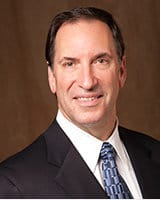
In my last column we discussed the concepts of price and value. We defined price as the consideration (cash, note, barter, etc.) paid to acquire an asset and value as the benefit (cash flow, enjoyment, etc.) received by the buyer of the asset.
The importance of value to the buyer of a dental practice is emphasized, since value is the buyer's actual take-home income. Our objective now is to learn how to recognize and measure value in practices.
To this end, let's examine two actual practices.
| Table 1 | Practice A | Practice B |
|---|---|---|
| Gross collections | $654,643 | $472,803 |
| Practice price | $425,000 | $289,000 |
| Price as a percent of gross | 65% | 61% |
| Buyer net income after all expenses and debt service | $121,910 | $129,353 |
| Buyer net as percentage of gross collections | 19% | 27% |
Most buyers would agree that Practice B is more desirable because the price is lower, the net income is higher, the price is a lower percentage of gross, and the percentage net is higher. Before deciding though, let's look at these two practices more closely.
| Table 2 | Practice A | Practice B |
|---|---|---|
| Hygiene collection | $170,879 | $104,017 |
| Seller (as post-sale associate to buyer) | $363,327 | $0 |
| Buyer produced collections | $120,437 | $368,786 |
| Buyer net income after all expenses and debt service | $121,910 | $129,353 |
| Buyer net as a percentage of personal production | 101% | 35% |
We have just introduced an important new statistic - buyer net as a percentage of personal production. This percentage, along with the net income dollar amount, is the most important measure of practice value.
Buyers who overlook this essential statistic will likely prefer Practice B. Buyers examining this statistic will likely prefer Practice A with a 101% net as a percentage of personal production compared to 35% for Practice B.
Additionally, Practice A's first year accrued equity of $74,692 plus the buyer's income of $121,910 yields a total benefit of $196,602 or 163% of personal production. Practice B's comparable first year equity of $51,105 and buyer's income of $129,353 yields a total benefit of $180,458, which is 49% of personal production. Simply put, Practice B's buyer will earn only one-third the value (income and equity) for a given amount of production as will Practice A's buyer.
One reason for these differences is practice overhead efficiency. Practice A's three-year average adjusted overhead expenses are 43% of gross compared to 54% for Practice B. Practice A's 11% higher efficiency results in a $72,000 higher net income for its owner compared to an equal amount of work produced in Practice B.
The most impactful difference, however, is due to surplus earnings from income generated by hygienists and the seller working as a post-sale associate. Practice A's income from these sources is $534,206. After paying seller and hygienist salaries of $198,116, Practice A has surplus earnings of $336,090 which pays the annual debt service of $116,263, with an additional $219,827 to apply to expenses. Practice B's hygiene collections of $104,017, less hygiene salaries of $46,140, leaves surplus earnings of $57,877, which covers 73% of the $79,549 debt service with nothing left over for overhead.
The dramatic contrast of these actual practice opportunities underscores the importance of understanding and applying the statistic of buyer net as a percentage of personal production to measure practice value - an essential understanding for making well-informed practice purchase decisions.

 Add me to your address book
Add me to your address book



